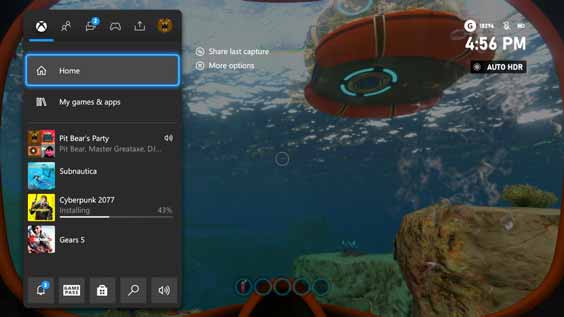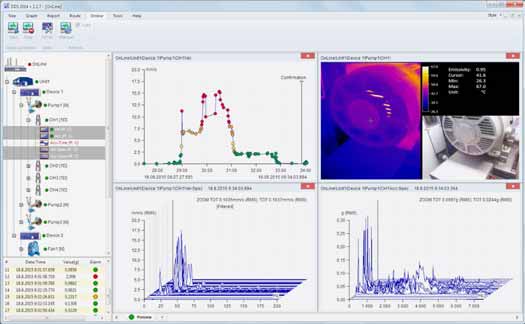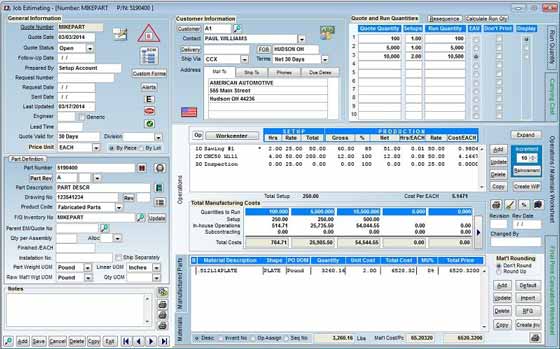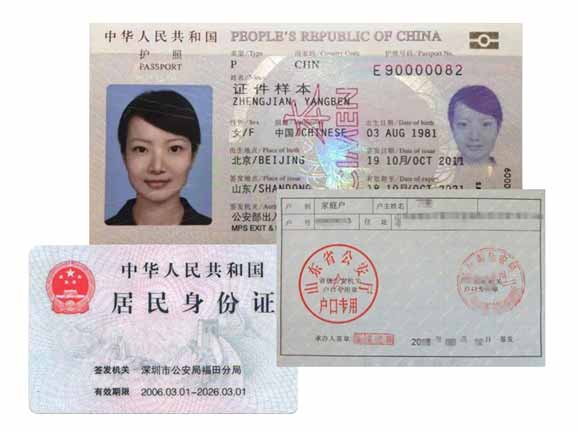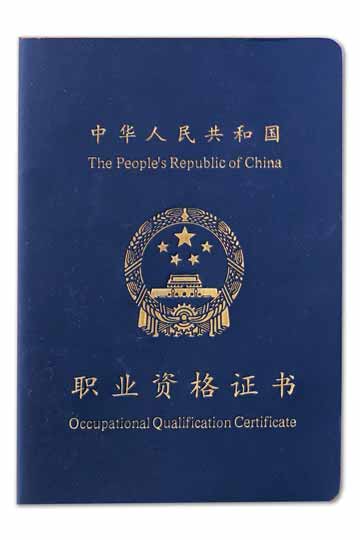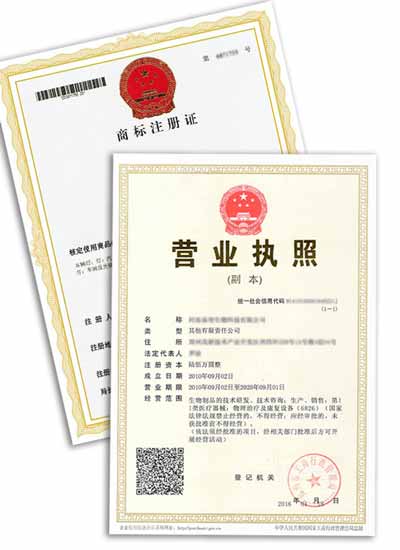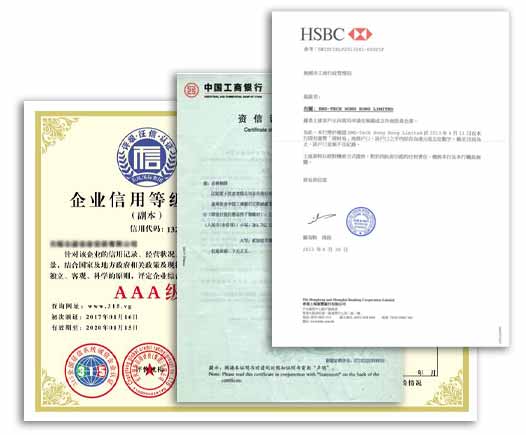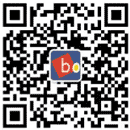翻译案例
翻译语种
联系我们
邮箱:liwei@bowwin.com
手机:+86-18565641179
电话:+86-755-8304 2538
地址:深圳市福田区彩田路彩虹新都彩霞阁23A
英文
中文
译
英文
说明:专业词准确,英文地道
多媒体技术
Multimedia Technology
译者:佚名
1.多媒体的出现
1. 信息技术发展趋势(用户观点)
要了解多媒体计算背后的动因,有必要从最终用户(相对于技术人员)角度考察一下信息技术。对于最终用户来讲,信息技术关心的是能访问各种形式的信息并能通过这些各种形式的信息进行协作(共同完成任务)。任何一种有益于完成这一任务的实际技术在最终用户看来只不过是一种工具而已。
从这一角度来看,我们有可能把信息技术从两个不同的方面表达:即最终用户可用的媒体形式进行有效通信的能力。现代信息用户在这两方面都面临着越来越大的压力。这些压力将在下面更为详细地讨论。
1.1.1 媒体形式
这些年来,用于传输信息的媒体范围增加了许多。早先,通信仅限于简单形式的媒体如声音和纸张。但在本世纪,引入了大量的不同的媒体类型,如电话和可视媒体。本世纪末,这种趋势在加剧。目前,可用于传输信息的媒体类型范围很广。
这方面的进展为诸如教育和商业这样的领域提供了许多新的发展机会。但是,同时也存在着与社会信息激增有关的一系列问题。尤其是存在着很大的产生信息过量的危险。这个问题在商务活动中能够见到:例如,行政决策者们必须根据不断增加的大量的各种各样的信息做出决策。类似的问题同样也出现在象政府、医疗和教育部门。
1.1.2 通信问题
从用户角度讲,信息技术更进一步的发展趋势是信息的分散化。现代的多数机构组织都非常庞大并且越于由若干个散布在广大范围的地区的许多分支机构构成。这些分支机构常常通过共享的交换信息而协同工作。这样,通信对大多数机构来讲就非常关键。高效的通信能使成功与失败差别巨大。没有适合的通信形式,就存在着信息匮乏的危险。也就是,决策者们没有恰当的信息用于做出正确的决策。
1.1.3 信息技术的需求
因此,最终用户面临着两个问题:信息过量和信息匮乏。他们要么拥有太多的信息,要么没有恰当的信息,也因此需要帮助最终用户管理信息以便减轻由不断增加的信息重要性所产生的负担。本质上讲,最终用户需要的是在恰当的时间把恰当的信息提供给适当的人。
显然这一点不能借于手工系统来完成。这样就必须使信息管理过程的自动化。
1.2 信息技术发展趋势(系统观点)
从系统观点来看,信息技术关心的是信息的处理和在不同的位置进行信息通信的能力。更为特别的是,信息技术被认作为是计算技术和通信基础的结合。 这项技术的目标实质是为最终用户管理信息。
从系统角度看,信息技术最为显著的发展趋势就是不断地使媒体集成。传统上,计算机系统仅仅处理数值计算。但是,随后文本处理变为计算机设计得们一个非常关心的问题。通信技术也被开发成能够支持文本和数值数据的传输,近来,计算机和通信能够支持的媒体类型激增,有关把图形集成到计算机工作站和通信技术的工作已取得重要进展,研究人员正在着手解决由音频和视频所产生的更为辣手的问题。
2.什么是多媒体
上一节既从用户角度又从系统角度强调了信息技术的一些重要发展趋势。从这些讨论里已引出两个主题。首先信息类型的式样性是现代信息系统的重要特征。其次,为处理多样性,集成是关键。这些观察结果为多媒体提供了一个很生动的定义:
多媒体=多样性+集成
多媒体系统必须支持各种媒体类型。这里包括象文本和图形这样平常的媒体也包括象动画、音频和视频这样丰富的媒体。但是,只有这一点对于多媒体环境是不够的。同样重要的是,要把各种媒体类型源集成到单个系统框架内。因而,一个多媒体系统就是这样一个系统:它允许最终用户以集成的方式共享、通信和处理各种形式的信息。
实质上,多媒体系统是试图通过把各种形式的媒体集成到计算机/通信基础设施中来解决信息管理问题。达到这一层次集成的好处有两点:
·计算机能帮助完成管理和处理信息的任务
·信息用户只须与单个集成环境而不是和许多分离的信息子系统打交道
这就是多媒体信息系统的最大优势,也是当前有关研究背后的主要动因。
3.多媒体技术
当初我们在屏幕上只看到文本时,基本的用户接口是DOS提示或者可能是一个简单的选择表。既然我们现在同时有图形和文本, 我们就可以有一更直观的、鼠标驱动的、基于图形的外加下拉式菜单的用户接口,如同在Macintosh、Microsoft
Windows和Presentation Manager中那样的用户接口。当我们可以加进质量如照片的图像、动画、优质声音和具有交互性时,我们就应该有能力使计算机功能更强和更易使用。
这就是多媒体这个最新术语背后的概念。多媒体一般是指图形、动画、光存储、图象处理和声音的合成,不是指单一技术、产品或市场。相反它是多种技术的集合,拥护者认为总有一天这些技术能融合在一起。迄今,多媒体的多数活动发生在Macintosh和Amiga
机上,因为它们具有内置的图形和声音功能,但你有希望看到这种技术会扩散到其它平台上。
今天,被当作多媒体的各种技术定义了很多独立的小类别。
其中最重要的是动画,其功能是在你的屏幕上移动图像。动画又与另一种叫做台式视频的概念紧密相连,实际是生成和视频图像、生成室内演示片、商业视频录相的草稿或培训产品。
在多媒体演示中声音也将起关键作用。
视频图像也占了很多磁盘空间。为了解决这个问题,尤其是随着可擦写光盘成为主流产品,有些团体期待着光盘存储。
台式视频图像和动画都不错,但很多支持者看中的是把所有这些单元结合成为一个交互系统(即交互多媒休或称作超级媒体)的方式。
此概念是让用户选择多媒体演示的走向,要能很容易地从一个单元移向另一单元。设想一个电影,你能控制下一步要发生什么。
传统的计算机语言完成此任务太难了,也许包含超级文本系统的面向目标的编程系统能发挥作用。
当然,Apple公司看中的Hypercard作为这种系统的核心万分。这是有些道理的。Hypercard符合很多基本准则:它被设计成可以定制的,能把各种类型的信息联接和混合在一起,这些信息包括文本、图形和动画。
这不是说现在不存在此技术的市场了。多媒体应用从专业水准的视频图像制作到公司图片演示、工种视算化,更好更简易的培训和计算机辅助教学产品等所有方面都有有具体用途。但你可以看到这些市场将更为专门、而不是大众化的,它介乎于CAD与台式出版之间。
让我们这样来看,使用计算机仍比开车或读报困难。在某种理想化的未来,它应更为强大,但利用多媒体技术,也更易使用。
4.什么是多媒体PC机
什么是MPC?它是“多媒体个人计算机”的缩写。它意味着你的计算领域已开始发生永久性变化,并变得越来越好。你知道你有很好的理由在家里拥有一台具有事务处理能力的PC机。它帮助你完成繁重的工作任务,否则这些任务将迫使你留在办公室里开夜车。
但是,当你不工作时,你在这些强大的家用PC机上能干些什么呢?这正好可让多媒体加入。在今天的家用PC机上增加立体声、CD-ROM光盘机和Windows操作系统相对而言是便宜的,而且也较容易。然而,你最覆盖得到的是远比一台能说话、能播放光盘和能显示美丽图像的计算机更为革命性的东西。你的多媒体PC机(为简单起见,简称为MPC)成了完成以下诸活动的关键:它能发现通过图像和话音将思想带入实际生活的书籍和百科全书;发现与最好的街道娱乐质量和趣味相媲美的游戏;以及发现能发挥的音乐、动画和视频图形方面个人创造力的软件。
对一台MPC机的要求在Microsoft公司的《多媒体PC机规范第1.0版》一书中有详细的描述。下面是此规范的要点:
基本系统:一台能运行Windows操作系统诉系统,它采用10MHZ时钟的286或速度更快的CPU;至少有2兆字节的RAM;30兆字节或更大容量的硬盘;3.5英寸1.44兆字节的软盘机;101键的键盘;两按钮的鼠标器以及并行、串行的控制杆端口。
视频显示:一般总是要求用VGA显示;特别推荐使用VGA+(标准VGA分辨率的8位彩色)。
CD-ROM:要求CD-ROM光盘机的数据传输出率至少为每秒150K,不能占用40%以上的CPU时间,能放出光盘的音频,平均存取时间为一秒或更短。
声频功能:一块8位的、11.025KHZ取样和22.05KHZ放声卡;能放出8个同时使用五种不同音色的音律的合成器;把光盘声频、取样和合成声音混合起来的混声器;麦克风输入;MIDI(乐器数字接品)输入、输出和通路。
第一种新技术都有它自己的术语,将它们进行分类是一项真正精细的工作,下面是MPC的两个术语。
全动图像:全动图像是数字记录的视频图像,以每秒30帧的电视广播标准或者以非常接近于此的速度重现图像,因而这些视频图像看上去很自然,没有跳跃感。
MIDI:MIDI是乐器数字接口的缩写,它是由音乐合成器制造商开发的标准规范。从一个键盘能控制几个乐器的概念已发展成一种方法,它能把乐器、磁带录音机、录像机、混声器、甚至舞台灯光都置于单台计算机的控制之下。
1. 信息技术发展趋势(用户观点)
要了解多媒体计算背后的动因,有必要从最终用户(相对于技术人员)角度考察一下信息技术。对于最终用户来讲,信息技术关心的是能访问各种形式的信息并能通过这些各种形式的信息进行协作(共同完成任务)。任何一种有益于完成这一任务的实际技术在最终用户看来只不过是一种工具而已。
从这一角度来看,我们有可能把信息技术从两个不同的方面表达:即最终用户可用的媒体形式进行有效通信的能力。现代信息用户在这两方面都面临着越来越大的压力。这些压力将在下面更为详细地讨论。
1.1.1 媒体形式
这些年来,用于传输信息的媒体范围增加了许多。早先,通信仅限于简单形式的媒体如声音和纸张。但在本世纪,引入了大量的不同的媒体类型,如电话和可视媒体。本世纪末,这种趋势在加剧。目前,可用于传输信息的媒体类型范围很广。
这方面的进展为诸如教育和商业这样的领域提供了许多新的发展机会。但是,同时也存在着与社会信息激增有关的一系列问题。尤其是存在着很大的产生信息过量的危险。这个问题在商务活动中能够见到:例如,行政决策者们必须根据不断增加的大量的各种各样的信息做出决策。类似的问题同样也出现在象政府、医疗和教育部门。
1.1.2 通信问题
从用户角度讲,信息技术更进一步的发展趋势是信息的分散化。现代的多数机构组织都非常庞大并且越于由若干个散布在广大范围的地区的许多分支机构构成。这些分支机构常常通过共享的交换信息而协同工作。这样,通信对大多数机构来讲就非常关键。高效的通信能使成功与失败差别巨大。没有适合的通信形式,就存在着信息匮乏的危险。也就是,决策者们没有恰当的信息用于做出正确的决策。
1.1.3 信息技术的需求
因此,最终用户面临着两个问题:信息过量和信息匮乏。他们要么拥有太多的信息,要么没有恰当的信息,也因此需要帮助最终用户管理信息以便减轻由不断增加的信息重要性所产生的负担。本质上讲,最终用户需要的是在恰当的时间把恰当的信息提供给适当的人。
显然这一点不能借于手工系统来完成。这样就必须使信息管理过程的自动化。
1.2 信息技术发展趋势(系统观点)
从系统观点来看,信息技术关心的是信息的处理和在不同的位置进行信息通信的能力。更为特别的是,信息技术被认作为是计算技术和通信基础的结合。 这项技术的目标实质是为最终用户管理信息。
从系统角度看,信息技术最为显著的发展趋势就是不断地使媒体集成。传统上,计算机系统仅仅处理数值计算。但是,随后文本处理变为计算机设计得们一个非常关心的问题。通信技术也被开发成能够支持文本和数值数据的传输,近来,计算机和通信能够支持的媒体类型激增,有关把图形集成到计算机工作站和通信技术的工作已取得重要进展,研究人员正在着手解决由音频和视频所产生的更为辣手的问题。
2.什么是多媒体
上一节既从用户角度又从系统角度强调了信息技术的一些重要发展趋势。从这些讨论里已引出两个主题。首先信息类型的式样性是现代信息系统的重要特征。其次,为处理多样性,集成是关键。这些观察结果为多媒体提供了一个很生动的定义:
多媒体=多样性+集成
多媒体系统必须支持各种媒体类型。这里包括象文本和图形这样平常的媒体也包括象动画、音频和视频这样丰富的媒体。但是,只有这一点对于多媒体环境是不够的。同样重要的是,要把各种媒体类型源集成到单个系统框架内。因而,一个多媒体系统就是这样一个系统:它允许最终用户以集成的方式共享、通信和处理各种形式的信息。
实质上,多媒体系统是试图通过把各种形式的媒体集成到计算机/通信基础设施中来解决信息管理问题。达到这一层次集成的好处有两点:
·计算机能帮助完成管理和处理信息的任务
·信息用户只须与单个集成环境而不是和许多分离的信息子系统打交道
这就是多媒体信息系统的最大优势,也是当前有关研究背后的主要动因。
3.多媒体技术
当初我们在屏幕上只看到文本时,基本的用户接口是DOS提示或者可能是一个简单的选择表。既然我们现在同时有图形和文本, 我们就可以有一更直观的、鼠标驱动的、基于图形的外加下拉式菜单的用户接口,如同在Macintosh、Microsoft
Windows和Presentation Manager中那样的用户接口。当我们可以加进质量如照片的图像、动画、优质声音和具有交互性时,我们就应该有能力使计算机功能更强和更易使用。
这就是多媒体这个最新术语背后的概念。多媒体一般是指图形、动画、光存储、图象处理和声音的合成,不是指单一技术、产品或市场。相反它是多种技术的集合,拥护者认为总有一天这些技术能融合在一起。迄今,多媒体的多数活动发生在Macintosh和Amiga
机上,因为它们具有内置的图形和声音功能,但你有希望看到这种技术会扩散到其它平台上。
今天,被当作多媒体的各种技术定义了很多独立的小类别。
其中最重要的是动画,其功能是在你的屏幕上移动图像。动画又与另一种叫做台式视频的概念紧密相连,实际是生成和视频图像、生成室内演示片、商业视频录相的草稿或培训产品。
在多媒体演示中声音也将起关键作用。
视频图像也占了很多磁盘空间。为了解决这个问题,尤其是随着可擦写光盘成为主流产品,有些团体期待着光盘存储。
台式视频图像和动画都不错,但很多支持者看中的是把所有这些单元结合成为一个交互系统(即交互多媒休或称作超级媒体)的方式。
此概念是让用户选择多媒体演示的走向,要能很容易地从一个单元移向另一单元。设想一个电影,你能控制下一步要发生什么。
传统的计算机语言完成此任务太难了,也许包含超级文本系统的面向目标的编程系统能发挥作用。
当然,Apple公司看中的Hypercard作为这种系统的核心万分。这是有些道理的。Hypercard符合很多基本准则:它被设计成可以定制的,能把各种类型的信息联接和混合在一起,这些信息包括文本、图形和动画。
这不是说现在不存在此技术的市场了。多媒体应用从专业水准的视频图像制作到公司图片演示、工种视算化,更好更简易的培训和计算机辅助教学产品等所有方面都有有具体用途。但你可以看到这些市场将更为专门、而不是大众化的,它介乎于CAD与台式出版之间。
让我们这样来看,使用计算机仍比开车或读报困难。在某种理想化的未来,它应更为强大,但利用多媒体技术,也更易使用。
4.什么是多媒体PC机
什么是MPC?它是“多媒体个人计算机”的缩写。它意味着你的计算领域已开始发生永久性变化,并变得越来越好。你知道你有很好的理由在家里拥有一台具有事务处理能力的PC机。它帮助你完成繁重的工作任务,否则这些任务将迫使你留在办公室里开夜车。
但是,当你不工作时,你在这些强大的家用PC机上能干些什么呢?这正好可让多媒体加入。在今天的家用PC机上增加立体声、CD-ROM光盘机和Windows操作系统相对而言是便宜的,而且也较容易。然而,你最覆盖得到的是远比一台能说话、能播放光盘和能显示美丽图像的计算机更为革命性的东西。你的多媒体PC机(为简单起见,简称为MPC)成了完成以下诸活动的关键:它能发现通过图像和话音将思想带入实际生活的书籍和百科全书;发现与最好的街道娱乐质量和趣味相媲美的游戏;以及发现能发挥的音乐、动画和视频图形方面个人创造力的软件。
对一台MPC机的要求在Microsoft公司的《多媒体PC机规范第1.0版》一书中有详细的描述。下面是此规范的要点:
基本系统:一台能运行Windows操作系统诉系统,它采用10MHZ时钟的286或速度更快的CPU;至少有2兆字节的RAM;30兆字节或更大容量的硬盘;3.5英寸1.44兆字节的软盘机;101键的键盘;两按钮的鼠标器以及并行、串行的控制杆端口。
视频显示:一般总是要求用VGA显示;特别推荐使用VGA+(标准VGA分辨率的8位彩色)。
CD-ROM:要求CD-ROM光盘机的数据传输出率至少为每秒150K,不能占用40%以上的CPU时间,能放出光盘的音频,平均存取时间为一秒或更短。
声频功能:一块8位的、11.025KHZ取样和22.05KHZ放声卡;能放出8个同时使用五种不同音色的音律的合成器;把光盘声频、取样和合成声音混合起来的混声器;麦克风输入;MIDI(乐器数字接品)输入、输出和通路。
第一种新技术都有它自己的术语,将它们进行分类是一项真正精细的工作,下面是MPC的两个术语。
全动图像:全动图像是数字记录的视频图像,以每秒30帧的电视广播标准或者以非常接近于此的速度重现图像,因而这些视频图像看上去很自然,没有跳跃感。
MIDI:MIDI是乐器数字接口的缩写,它是由音乐合成器制造商开发的标准规范。从一个键盘能控制几个乐器的概念已发展成一种方法,它能把乐器、磁带录音机、录像机、混声器、甚至舞台灯光都置于单台计算机的控制之下。
1. The Emergence of Multimedia
1.1 Trends in information technology (a user perspective)
To understand the motivation behind multimedia computing, it is important
to consider information technology from the point of view of the end user
(as opposed to the technologist). To an end user, information technology
is concerned with access to various forms of information and the ability
to cooperate through these forms of information. Any actual technology
which helps in this task is merely a means to an end.
From this perspective, it is possible to identify two separate aspects
of information technology, namely the forms of media available to an end
user and the ability to efficiently communicate using these media forms.
In both these areas, the modern user of information is coming under increased
pressure. These pressures are discussed in more details below.
1.1.1 forms of media
In recent years, there has been a dramatic increase in the range of media
used to convey information. Initially, communication was limited to simple
forms of media such as voice and paper. This century, however, has witnessed
the introduction of a greater variety of media types such as the telephone
and visual forms of media. In the latter part of the century, this trend
has accelerated and there is now a wide range of media types available
to convey information.
These advances provide a great opportunity for new developments in a range
of areas such as education and commerce. However, there are also a number
of problems associated with the growth of information in society. In particular,
there is a great danger of creating information overload. This problem
can be seen, for example, in business where executives are required to
make decisions based on an ever increasing variety and volume of information.
Similar problems are also occurring in areas such as government, health
care and education.
1.1.2 Problems of communication
A further trend in information technology from a user perspective is the
decentralization of information. Most modern organizations are very large
and tend to consist of a number of separate institutions typically cooperate
through the sharing and exchange of information. Thus, communication is
a vital concern for most organizations and efficient communications can
make the difference between successful operation and failure. Without the
appropriate forms of communication. There is a danger of information starvation,
i. e. decision makers do not have the right information to make the correct
decisions.
1.1.3 Requirements for information technology
The end user is therefore faced with the two problems of information overload
and information starvation. They may either have too much information of
may not have the right information. There is therefore a need to help the
end user to manage information to ease the burden created by the increasing
importance of information. essentially, the end user needs support to get
the right information to the right people at the right time. This clearly
cannot be achieved by manual systems. Thus, there is a requirement for
automation in the process of information management.
1.2 Trends in information technology (a systems perspective)
From a systems perspective, information technology is concerned with the
processing of information and the ability to communicate information between
different sites. More specifically, information technology is seen as a
combination of computing technology and communications infrastructures.
The aim of this technology is essentially to manage information for the
end user.
The most noticeable trend in information technology from a system perspective
has been the increasing integration of media. Traditionally, computer systems
dealt exclusively with numerical calculations. However, text processing
soon became an important concern for computer designers. Communications
technologies were also developed to support the transmission of textual
and numerical data. More recently, there has been a dramatic increase in
the range of media types supported by computers and communications technologies.
Significant steps have been taken in integrating graphics into computer
workstations and communications technology. Researchers are now tackling
the harder problems presented by audio and video.
2.What is Multimedia?
The previous section has highlighted important trends in information technology
from both the end user and technology perspective. Two themes have emerged
from this discussion. Firstly, the variety of media types is an important
feature of modern information systems. Secondly, in order to deal with
the variety, integration is a critical concern. These observations provide
a good working definition of multimedia:
MULTIMEDIA=VARIETY+INTEGRATION
It is necessary for a multimedia system to support a variety of media types.
This could be as modest as text and graphics or as rich as animation, audio
and video. However, this alone is not sufficient for a multimedia environment.
It is also important that the various sources of media types are integrated
into a single system framework. A multimedia system is then one which allows
end users to share, communicate and process a variety of forms of information
in an integrated manner.
In essence, multimedia systems are attempting to solve the problems of
information management by integrating the various forms of media into the
compute/communications infrastructure. There are two benefits of achieving
this level of integration:
· the computer can help in the task of managing and processing the information.
· information user only have to deal with one integrated environment rather
than a number of separate information subsystems.
This is the great benefit of multimedia information systems and is the
main motivation behind the current research on the subject.
3.Multimedia Technology
When we just had text on screen, the basic user interface was a DOS prompt
or maybe a simple list of choices. Now that we have graphics and text at
the same time, we can have a much more intuitive mouse-driven graphics
based user interface with pulldown menus, as in the Macintosh, Microsoft
Windows, and Presentation Manager. When we can add photograph-quality images,
animation, good-quality sound, and interactivity, then we ought to be able
to make computers much more powerful-and much easier to use.
That's the concept behind Multimedia, the newest buzzword. Multimedia,
which typically refers to a synthesis of graphics, animation, optical storage,
image processing, and sound, is not a single technology, product, or market.
Instead, it is a collection of technologies that proponents believe will
one day be joined together. So far, most of the activity in Multimedia
has taken place on the Macintosh and on the Amiga because of their built-in
graphics and sound features but you can expect this technology to spread
to other platforms.
Today, the various technologies referred to as Multimedia define a number
of individual niches.
One of the most important of these is animation, the capability to have
moving images on your screen.
Animation is tightly tied in with another concept called desktop video
— actually creating and manipulating video images, to produce in-house
presentations, rough drafts of commercial videos, or training products.
Sound will also play a key role in multimedia presentations.
Video images also take up a lot of disk space. To handle this, some groups
are looking at optical discs for storage, particularly as erasable optical
media become more mainstream.
Desktop video and animation is all well and good, but what many proponents
see is a way of combining all these elements into an interactive system
— interactive multimedia or hypermedia.
The concept is to let a user select the direction of a multimedia presentation,
easily moving from one element to another. Imagine a movie in which you
can control what happens next.
Traditional computer languages are far too difficult for this task; perhaps
an object-oriented programming system that includes a hypertext system
would work.
Apple, of coures, sees Hypercard as the core element in such a system.
This makes a certain amount of sense. Hypercard fits many of the basic
criteria: It was designed to be customizable, capable of linking information
and incorporating all kinds of information, including text, graphics, and
animation.
That's not to say there aren't already markets for this technology. Multimedia
applications have specific uses all over the spectrum, from professional-quality
video production to corporate presentations to engineering visualization
to better and easier training and computer-aided instruction products.
But you can expect these markets to be more targeted (vertical) than mass
marketed, somewhere between CAD and desktop publishing.
Let's look at it this way: Using a computer is still more difficult than
driving a car of reading a newspaper. In some ideal future, it should be
still more powerful — but, with multimedia techniques, much easier to use.
4.What is MPC?
What is MPC? MPC stands for "multimedia personal computer". What it means
that your computing universe has just changed, forever and for the better.
You know you have good reason to own a business-strengh PC at home. It
helps you complete the work chores that otherwise would keep you burning
the midnight oil back at the office.
But what can you do with your home PC powerhouse when you're not working?
That's where multimedia comes in. It's relatively cheap and easy to add
stereo sound, a CD-ROM drive, and Windows to today's work-at-home PC. What
you end up with, though, is something far more revolutionary than just
a computer that talks, plays compact discs, and displays pretty pictures.
Your multimedia PC — MPC, for short — is the key to discovering books and
encyclopedias that bring ideas to life through images and speech, games
that match the quality and fun of the best arcade entertainment, and software
that unleashes your personal creativity in music, animation, and video.
The requirements for an MPC are described in detail in Microsoft's Multimedia
PC Specification Version 1.0. Here are the key elements of the spec:
BASE SYSTEM: A Windows-capable system with a 10-MHz 286 or faster CPU;
at least 2MB of RAM; a 30-MB or larger hard disk; a 3.5-inch 1.44-MB floppy
drive; a 101-key keyboard; a two-button mouse; and parallel, serial, and
joystick ports.
VIDEO: Standard VGA is all that's required; VGA+(8bit color at standard
VGA resolution) is strongly recommended.
CD-ROM: A CO-ROM drive that transfers at least 150K of data per second
without taking up more than 40 percent of the CPU's attention, plays CD
audio, and has an average access time of 1 second or less.
AUDIO: A sound board with 8-bit, 11.025-KHz sampling and 22.05-KHz playback;
a synthesizer capable of playing eight notes simultaneously using five
different sounds; a mixer to combine CD audio, sampling, and synth; a microphone
input; and MIDI in, out, and thruports.
Every new technology has its own buzzwords, and sorting them out can be
real detective work. The following is two jargons of MPC.
FULL-MOTION VIDEO
Full-motion video is digitally recorded video played back at the broadcast
standard of 30 frames per second, or close enough to that speed so the
video appears smooth rather than jerky.
MIDI
MIDI is short for Musical Instrument Digital Interface, a standard specification
developed by music synthesizer manufacturers. The concept of being able
to control several instruments from one keyboard has grown into a method
for putting musical instruments, tape recorders, VCRs, mixers, and even
stage-lighting under the control of a single computer.
1.1 Trends in information technology (a user perspective)
To understand the motivation behind multimedia computing, it is important
to consider information technology from the point of view of the end user
(as opposed to the technologist). To an end user, information technology
is concerned with access to various forms of information and the ability
to cooperate through these forms of information. Any actual technology
which helps in this task is merely a means to an end.
From this perspective, it is possible to identify two separate aspects
of information technology, namely the forms of media available to an end
user and the ability to efficiently communicate using these media forms.
In both these areas, the modern user of information is coming under increased
pressure. These pressures are discussed in more details below.
1.1.1 forms of media
In recent years, there has been a dramatic increase in the range of media
used to convey information. Initially, communication was limited to simple
forms of media such as voice and paper. This century, however, has witnessed
the introduction of a greater variety of media types such as the telephone
and visual forms of media. In the latter part of the century, this trend
has accelerated and there is now a wide range of media types available
to convey information.
These advances provide a great opportunity for new developments in a range
of areas such as education and commerce. However, there are also a number
of problems associated with the growth of information in society. In particular,
there is a great danger of creating information overload. This problem
can be seen, for example, in business where executives are required to
make decisions based on an ever increasing variety and volume of information.
Similar problems are also occurring in areas such as government, health
care and education.
1.1.2 Problems of communication
A further trend in information technology from a user perspective is the
decentralization of information. Most modern organizations are very large
and tend to consist of a number of separate institutions typically cooperate
through the sharing and exchange of information. Thus, communication is
a vital concern for most organizations and efficient communications can
make the difference between successful operation and failure. Without the
appropriate forms of communication. There is a danger of information starvation,
i. e. decision makers do not have the right information to make the correct
decisions.
1.1.3 Requirements for information technology
The end user is therefore faced with the two problems of information overload
and information starvation. They may either have too much information of
may not have the right information. There is therefore a need to help the
end user to manage information to ease the burden created by the increasing
importance of information. essentially, the end user needs support to get
the right information to the right people at the right time. This clearly
cannot be achieved by manual systems. Thus, there is a requirement for
automation in the process of information management.
1.2 Trends in information technology (a systems perspective)
From a systems perspective, information technology is concerned with the
processing of information and the ability to communicate information between
different sites. More specifically, information technology is seen as a
combination of computing technology and communications infrastructures.
The aim of this technology is essentially to manage information for the
end user.
The most noticeable trend in information technology from a system perspective
has been the increasing integration of media. Traditionally, computer systems
dealt exclusively with numerical calculations. However, text processing
soon became an important concern for computer designers. Communications
technologies were also developed to support the transmission of textual
and numerical data. More recently, there has been a dramatic increase in
the range of media types supported by computers and communications technologies.
Significant steps have been taken in integrating graphics into computer
workstations and communications technology. Researchers are now tackling
the harder problems presented by audio and video.
2.What is Multimedia?
The previous section has highlighted important trends in information technology
from both the end user and technology perspective. Two themes have emerged
from this discussion. Firstly, the variety of media types is an important
feature of modern information systems. Secondly, in order to deal with
the variety, integration is a critical concern. These observations provide
a good working definition of multimedia:
MULTIMEDIA=VARIETY+INTEGRATION
It is necessary for a multimedia system to support a variety of media types.
This could be as modest as text and graphics or as rich as animation, audio
and video. However, this alone is not sufficient for a multimedia environment.
It is also important that the various sources of media types are integrated
into a single system framework. A multimedia system is then one which allows
end users to share, communicate and process a variety of forms of information
in an integrated manner.
In essence, multimedia systems are attempting to solve the problems of
information management by integrating the various forms of media into the
compute/communications infrastructure. There are two benefits of achieving
this level of integration:
· the computer can help in the task of managing and processing the information.
· information user only have to deal with one integrated environment rather
than a number of separate information subsystems.
This is the great benefit of multimedia information systems and is the
main motivation behind the current research on the subject.
3.Multimedia Technology
When we just had text on screen, the basic user interface was a DOS prompt
or maybe a simple list of choices. Now that we have graphics and text at
the same time, we can have a much more intuitive mouse-driven graphics
based user interface with pulldown menus, as in the Macintosh, Microsoft
Windows, and Presentation Manager. When we can add photograph-quality images,
animation, good-quality sound, and interactivity, then we ought to be able
to make computers much more powerful-and much easier to use.
That's the concept behind Multimedia, the newest buzzword. Multimedia,
which typically refers to a synthesis of graphics, animation, optical storage,
image processing, and sound, is not a single technology, product, or market.
Instead, it is a collection of technologies that proponents believe will
one day be joined together. So far, most of the activity in Multimedia
has taken place on the Macintosh and on the Amiga because of their built-in
graphics and sound features but you can expect this technology to spread
to other platforms.
Today, the various technologies referred to as Multimedia define a number
of individual niches.
One of the most important of these is animation, the capability to have
moving images on your screen.
Animation is tightly tied in with another concept called desktop video
— actually creating and manipulating video images, to produce in-house
presentations, rough drafts of commercial videos, or training products.
Sound will also play a key role in multimedia presentations.
Video images also take up a lot of disk space. To handle this, some groups
are looking at optical discs for storage, particularly as erasable optical
media become more mainstream.
Desktop video and animation is all well and good, but what many proponents
see is a way of combining all these elements into an interactive system
— interactive multimedia or hypermedia.
The concept is to let a user select the direction of a multimedia presentation,
easily moving from one element to another. Imagine a movie in which you
can control what happens next.
Traditional computer languages are far too difficult for this task; perhaps
an object-oriented programming system that includes a hypertext system
would work.
Apple, of coures, sees Hypercard as the core element in such a system.
This makes a certain amount of sense. Hypercard fits many of the basic
criteria: It was designed to be customizable, capable of linking information
and incorporating all kinds of information, including text, graphics, and
animation.
That's not to say there aren't already markets for this technology. Multimedia
applications have specific uses all over the spectrum, from professional-quality
video production to corporate presentations to engineering visualization
to better and easier training and computer-aided instruction products.
But you can expect these markets to be more targeted (vertical) than mass
marketed, somewhere between CAD and desktop publishing.
Let's look at it this way: Using a computer is still more difficult than
driving a car of reading a newspaper. In some ideal future, it should be
still more powerful — but, with multimedia techniques, much easier to use.
4.What is MPC?
What is MPC? MPC stands for "multimedia personal computer". What it means
that your computing universe has just changed, forever and for the better.
You know you have good reason to own a business-strengh PC at home. It
helps you complete the work chores that otherwise would keep you burning
the midnight oil back at the office.
But what can you do with your home PC powerhouse when you're not working?
That's where multimedia comes in. It's relatively cheap and easy to add
stereo sound, a CD-ROM drive, and Windows to today's work-at-home PC. What
you end up with, though, is something far more revolutionary than just
a computer that talks, plays compact discs, and displays pretty pictures.
Your multimedia PC — MPC, for short — is the key to discovering books and
encyclopedias that bring ideas to life through images and speech, games
that match the quality and fun of the best arcade entertainment, and software
that unleashes your personal creativity in music, animation, and video.
The requirements for an MPC are described in detail in Microsoft's Multimedia
PC Specification Version 1.0. Here are the key elements of the spec:
BASE SYSTEM: A Windows-capable system with a 10-MHz 286 or faster CPU;
at least 2MB of RAM; a 30-MB or larger hard disk; a 3.5-inch 1.44-MB floppy
drive; a 101-key keyboard; a two-button mouse; and parallel, serial, and
joystick ports.
VIDEO: Standard VGA is all that's required; VGA+(8bit color at standard
VGA resolution) is strongly recommended.
CD-ROM: A CO-ROM drive that transfers at least 150K of data per second
without taking up more than 40 percent of the CPU's attention, plays CD
audio, and has an average access time of 1 second or less.
AUDIO: A sound board with 8-bit, 11.025-KHz sampling and 22.05-KHz playback;
a synthesizer capable of playing eight notes simultaneously using five
different sounds; a mixer to combine CD audio, sampling, and synth; a microphone
input; and MIDI in, out, and thruports.
Every new technology has its own buzzwords, and sorting them out can be
real detective work. The following is two jargons of MPC.
FULL-MOTION VIDEO
Full-motion video is digitally recorded video played back at the broadcast
standard of 30 frames per second, or close enough to that speed so the
video appears smooth rather than jerky.
MIDI
MIDI is short for Musical Instrument Digital Interface, a standard specification
developed by music synthesizer manufacturers. The concept of being able
to control several instruments from one keyboard has grown into a method
for putting musical instruments, tape recorders, VCRs, mixers, and even
stage-lighting under the control of a single computer.
- 上一篇:百来福家用电热水器安装使用说明书-ELECTRIC WATER HEATER Installing and Opera
- 下一篇:advertisement-Cellular Phonev-广告-移动电话
文化与资讯
-
2022-10-26选择北京翻译公司要注意哪些问题?
-
2021-06-22陪同翻译有哪些注意事项?
-
2021-01-20爱丽丝·门罗:不是“蛮译”是“慢译”
-
2021-01-18翻译公司:只是翻译惹的祸
-
2021-01-03常用网上资源
-
2021-01-03英伦印迹:看我这样享受恬淡留学生活
翻译服务

